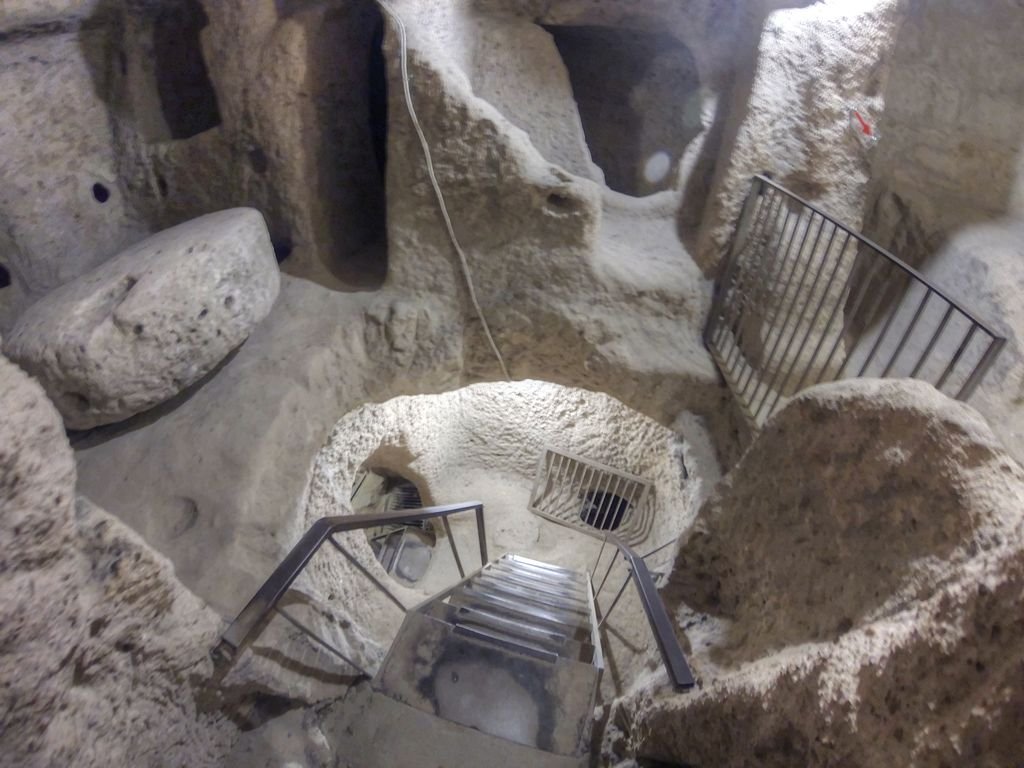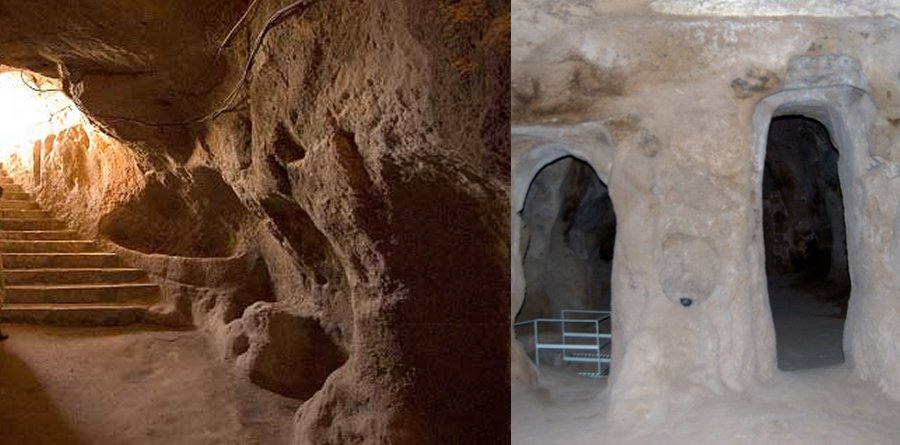MessageToEagle.com – It is still unknown how many underground sites there are in Cappadocia, Turkey.
One underground settlement that is part of the Cappadocia complex is called Mazi underground city. Mazi is a small village about 30-40 minutes from Goreme in Cappadocia. Located not far from the impressive Kaymakli underground city, Mazi was known as was Mataza in ancient times. The underground city contains tombs dating back to the early Roman period.
It is possible to enter and exit Mazi underground city through four different location points. It really doesn’t matter which of the four access points you chose, they all lead to a central hall. The main entrance to the city is made of millstone in which a stone could be rolled over and used to cover the entrance.

Inside the Mazi underground city there is a network of tunnels. Within this underground settlement there are also certain areas especially provided to serve as barns, with each area designated for different specialties. The space inside the underground city also contained a winery between the areas served as barns. In order for the winery to obtain grapes, there was a chimney which led to the surface and allowed grapes to fall down into. Additionally, the city contains a church which can be accessed via a short corridor.
All of the discovered underground cities in Cappadoccia are unique in their range, their complexity, their variety and possibly in the time periods in which they were developed.
The first mention of these subterranean sites occurs in the works of Xenophon written around 400 BC. Xenophon was a Greek mercenary who took charge of the Ten Thousand after the death of Cyrus, marching across Cappadocia with them:
The houses were built underground; the entrances were like wells but they broadened out lower down. There were tunnels dug in the ground for the animals while the men went down by ladder. Inside the houses there were goats, sheep, cows and poultry with their young […]
There was also wheat, beans, and barley wine in great bowls […] When one was thirsty, one was meant to take a reed and suck the wine into one’s mouth. This barley wine is exceedingly strong and is best mixed with water; but any man who is accustomed to it and drinks it undiluted enjoys its flavor to the full.
See also:
Forgotten Cave Churches Of Cappadocia
Impressive Kaymakli Underground City – An Ancient Hiding Place
Highly Sophisticated Underground City Of Derinkuyu – Who Were The Master Builders?
Explore Mysterious Ancient Underground Worlds
Some authorities suggest that the underground cities were created during the earlier period, as storage areas, by the Hittites and were much later extended and brought into use as refuges for Christians persecuted by the Romans. Others maintain that the cities were created somewhat later, by the Phrygians, as a line of defense against the Assyrians. The most commonly held view is that the cities were excavated during Roman and/or Byzantine times.
There are as previously mentioned a number of intriguing underground cities in the interesting historical region.
The widest of the underground cities in Cappadocia is the Kaymakli underground city, while the highly sophisticated underground city of Derinkuyu is the deepest one.
MessageToEagle.com







